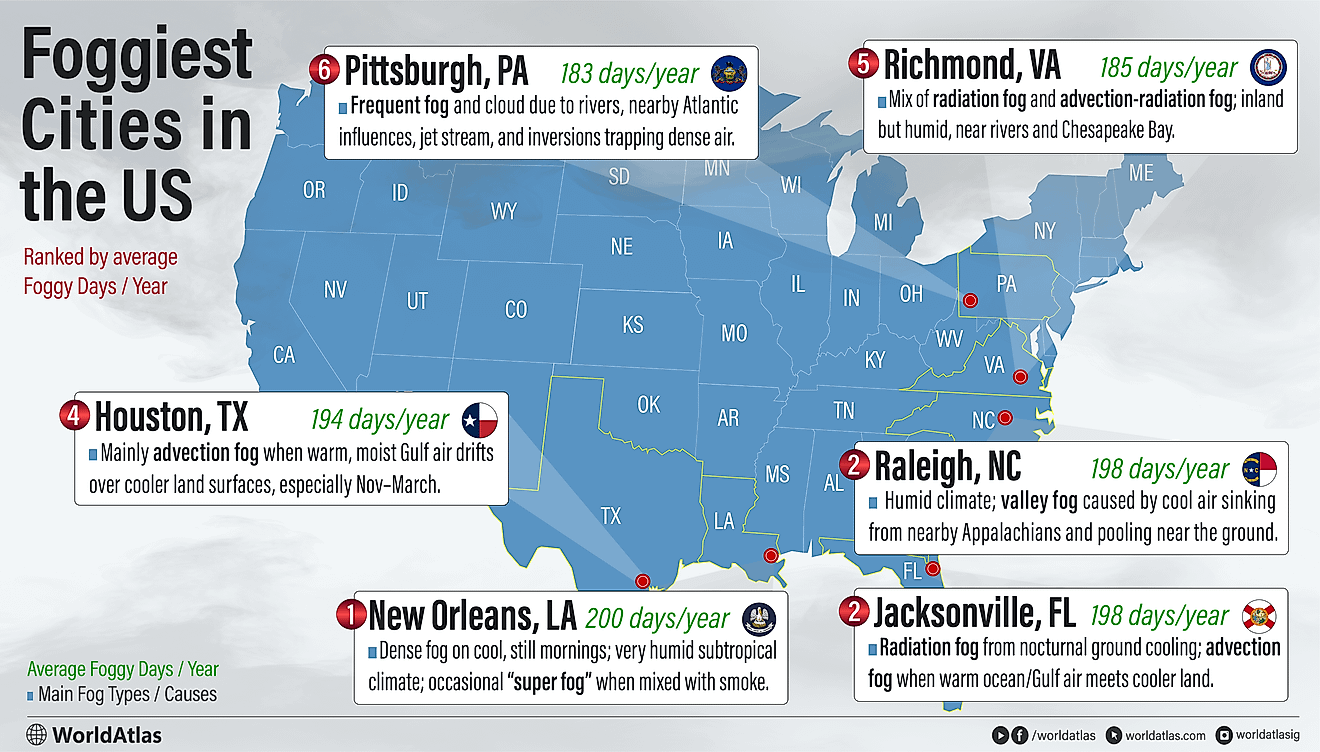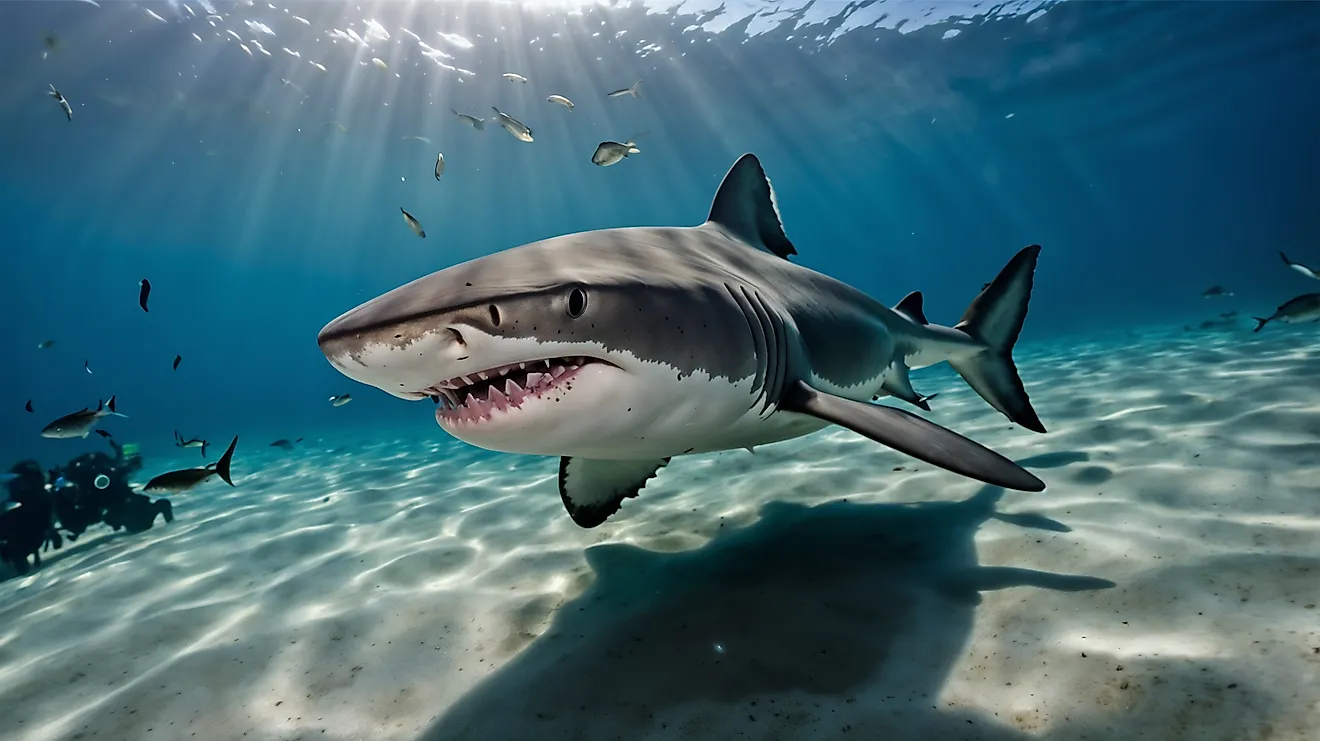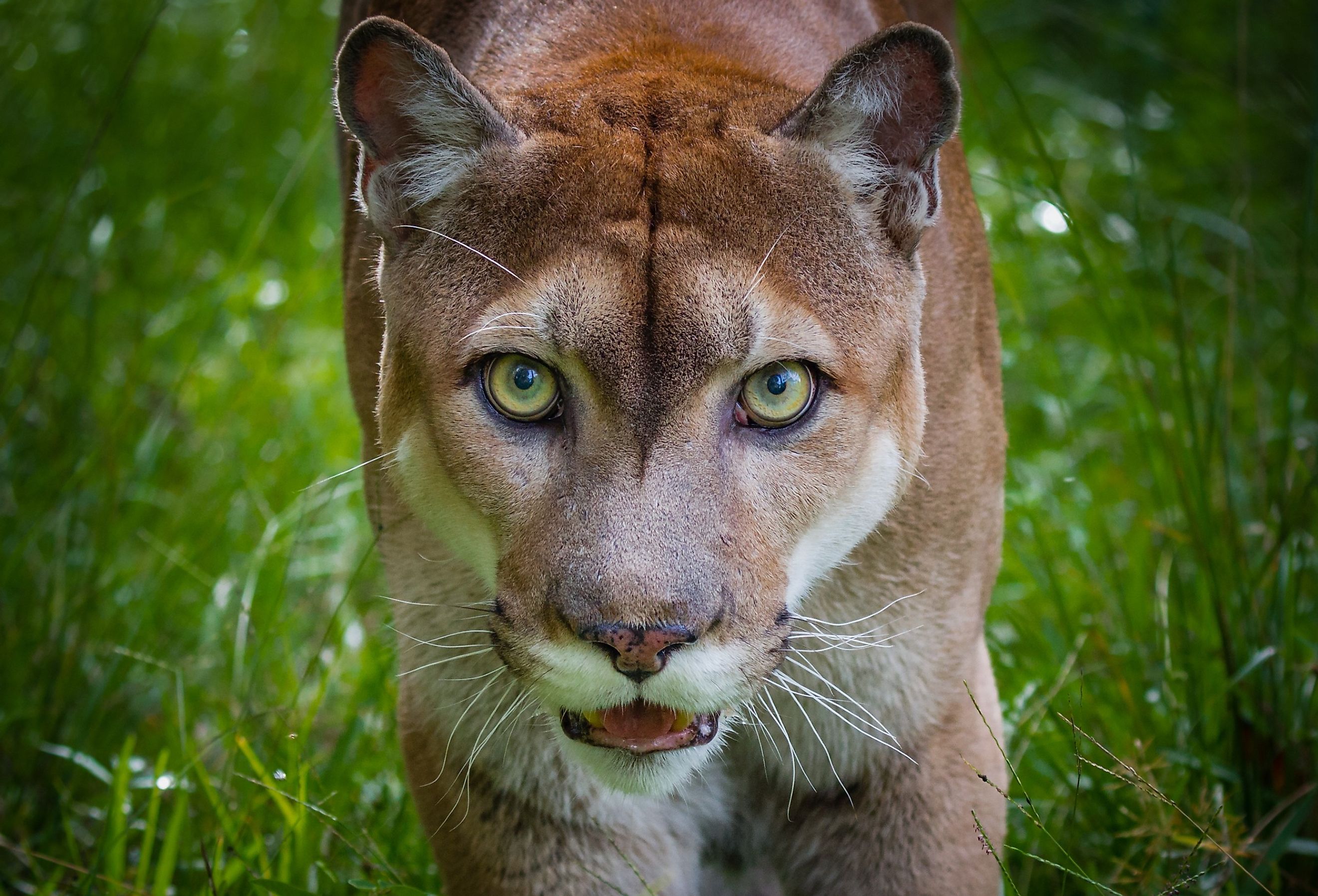
The 12 Most Beautiful Wild Animals In Florida
Within Florida’s mystical ocean reefs and mysterious swamplands, an extraordinary range of species thrive, coloring habitats with their beauty. Across the state’s 45 different terrestrial ecosystems, these photogenic wild animals each have something that sets them apart from the average creature, something that elicits awe. Many are the subject of legends, while others are simply appreciated for their breathtaking forms. From the brightest feather to the flattest flipper, from land to the Atlantic, these reptiles, mammals, and birds exude patterns and colors so surreal it is truly no wonder Floridians work so hard to preserve their beauty.
American Flamingo (Phoenicopterus ruber)
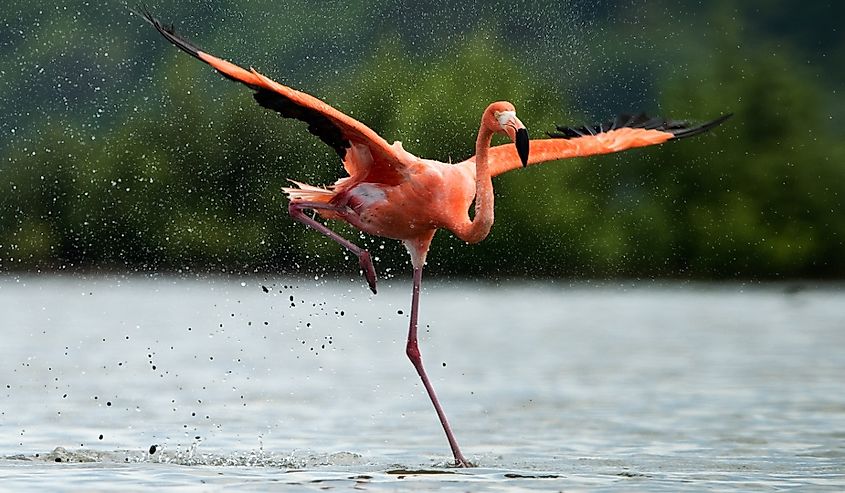
The American flamingo is one of Florida’s most iconic wild animals. They are famously associated with their neon pink plumage, whose hue comes from the foods they consume, such as shrimp. The prominent black accent feathers on the wing-tips contrast the pink, which is especially stunning when the bird is in flight. But the image most associated with these 5-foot-tall, long-necked birds is their signature 1-legged stance. There are competing theories behind its purpose, some scientists believing it is to avoid fatigue while others argue it helps conserve heat. But whatever the reason, this stance is arguably the flamingo’s most recognizable feature, aside from its feathers.
Although it has been up for debate in the past, the Florida Fish and Wildlife Conservation Commission (FWC) concludes that the flamingo is a native state bird. Due to lack of conservation in the past, however, by the 1900s, this once plentiful species had all but disappeared from the state until breeding colonies were erected. Today, these beautiful creatures have been spotted in the wild along Florida’s coastline, but over 95% of sightings occur in Biscayne Bay, the Everglades, and the Florida Keys. The New Yorker explains that the bird is so "synonymous with the Sunshine State," that over 2,300 businesses have borrowed the animal’s name.
Roseate Spoonbill (Platalea ajaja)
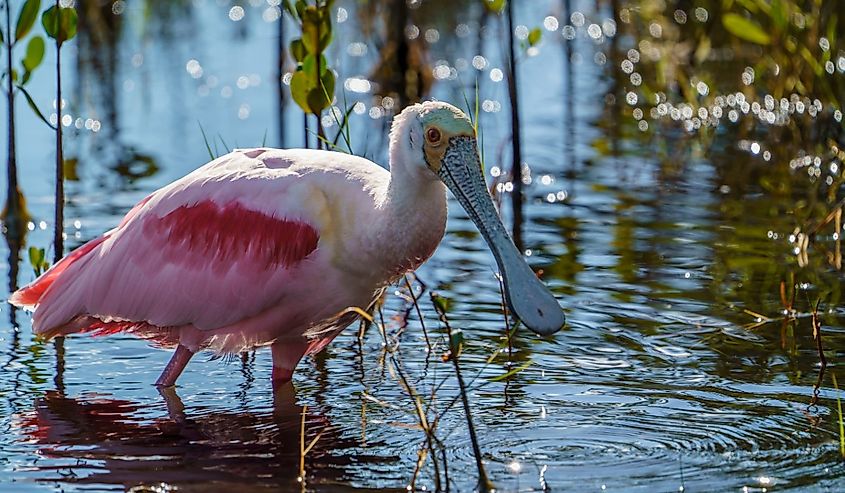
When the roseate spoonbill takes flight, its vibrant pink feathers may lead you to mistake it for the similarly colored flamingo. Like the flamingo, its pretty pink hue comes from the pigments in the food it eats. But the roseate spoonbill is far smaller in height, reaching only 2.5 feet, and much of its body feathers are a soft white that blends with the pink in an ombre-like effect. However, the defining feature that sets this species apart is in the name. The roseate spoon bill’s large bill mimics the shape of a spoon, which is a striking evolutionary trait that helps capture water prey.
You can spot these flamingo-lookalikes in Tampa Bay, Brevard County, and Florida Bay. Historically, the species was appreciated and over-hunted for its feathers — a practice that nearly eliminated their Florida population. Thankfully, Floridians did not want to lose this magnificent bird, and plume hunting roseate spoonbills was made illegal by the US Migratory Bird Treaty Act. It is the only species of spoonbill found in the Americas, after all, which is perhaps one of the reasons this bird is so strongly protected.
Great Blue Heron (Ardea herodias)
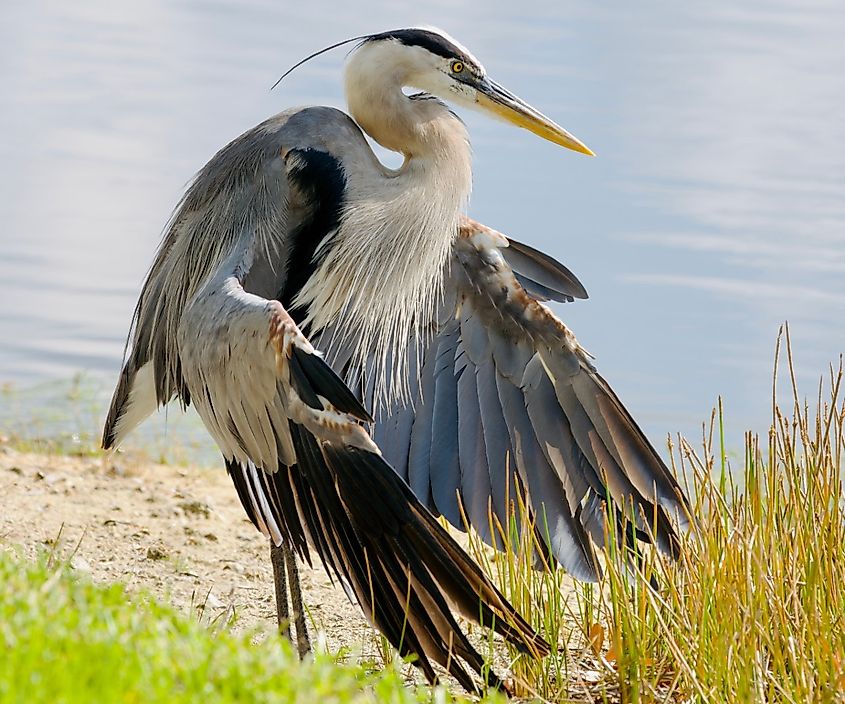
Although great blue herons reach almost 5 feet tall as flamingos, rest assured, you will not mistake this bird for its pink peer. They are known for being the largest of all North American herons, with an accompanied wingspan of up to 6.5 feet. Its blue-gray color, "S" curved neck, and thin, long legs are a sight to behold, making it no surprise that "great" was tacked to the front of its name.
These beautiful birds are highly adaptable, which is partially why their populations continue to thrive in Florida to this day. They are easy to spot, and you can find them in Florida’s salt and freshwater coasts, marshes, lakes, and riverbanks. You will often see them wading slowly through shallow waters or pausing in a statuesque state in wait of their prey. This impressive stillness is why the great blue heron–and herons in general–have been symbols of grace, strength, and patience across cultures for thousands of years.
American Alligator (Alligator mississippiensis)
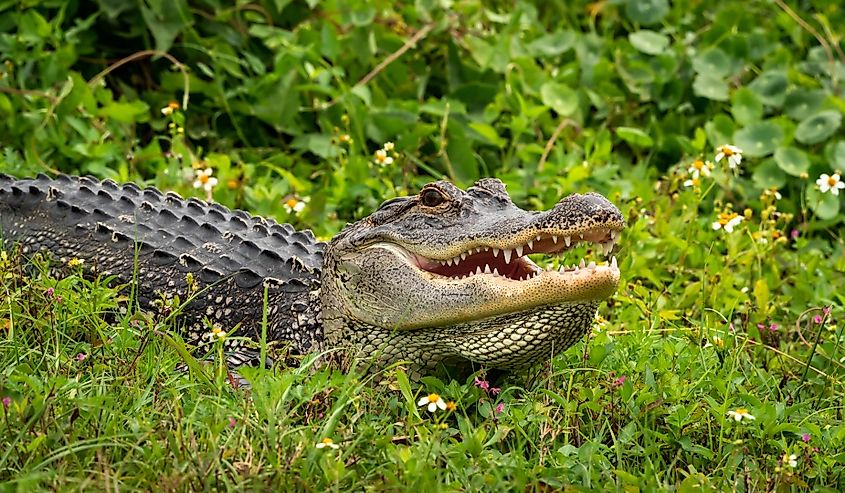
The American alligator, to a great extent, has become a symbol of Florida. These massive, majestic creatures are well known for living in the famous Everglades. But American alligators also live throughout the rest of the state, requiring many Floridians to become accustomed to living in harmony with them — albeit admiring their beauty from a distance. There are around 1.25 million alligators throughout Florida, meaning the sightings can be pretty predictable for locals. But common occurrence or not, these enormous aquatic reptiles are jaw-dropping if you ever get the chance to see one in person.
Female alligators are usually smaller than their counterparts (typically reaching 10 feet in length), while a male takes the state record for both length and weight at over 14 feet long and 1,043 pounds. Generally, these gators are dark gray in color, but they have also been known to take on the color of their environment. The green we often associate with them can be linked to the algae and aquatic vegetation that finds its way onto their backs, which actually serves as a form of camouflage and helps with hunting. This hunting is an integral component of their environments, so much so, that they are considered a keystone species, with Florida International University even calling them "ecosystem engineers."
Florida Manatee (Trichechus manatus)
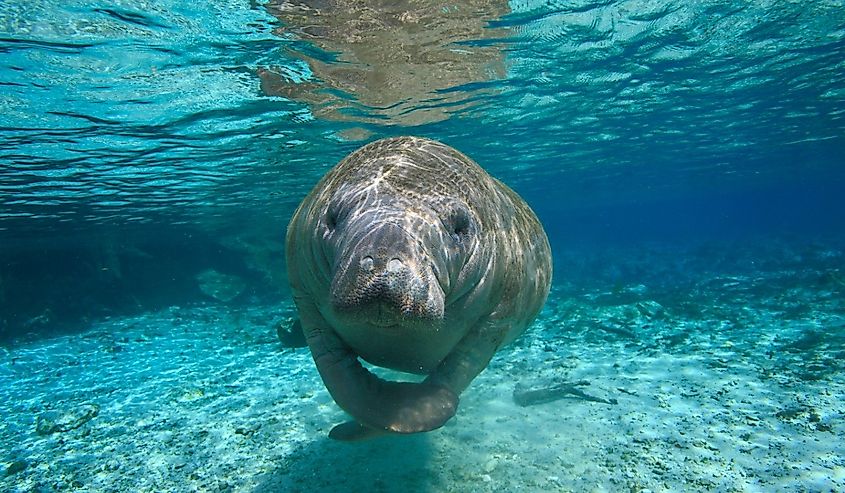
The Florida manatee is a subspecies of the West Indian manatee. Native to Florida, these massive aquatic mammals reach a 9 to 10-foot length at 1000 pounds, but the outliers can grow longer than 13 feet, weighing over 3,500 pounds. Yet despite their tremendous size, they are arguably more pretty than the similarly-sized alligators, thanks to their appearance and behavior. Their round bodies, wrinkled snouts, and flexible flippers and tails create a much gentler image, along with their slower and softer speed.
Manatees are also incredibly agile for their size, with the ability to swim upside down and do somersaults in the water. When they are not resting on the ocean’s surface or floor, their time is generally spent propelling themselves forward in search of food. As aquatic herbivores, they graze primarily on algae and seagrass, and they consume upwards of 9% of their body weight per day, eating for up to 8 hours. The manatee’s gentle appearance and behavior earned it the fond nickname of "sea cows," and the creatures are beloved by Floridians and non-Floridians alike. In 1975, they were even designated Florida’s official state marine mammal.
Atlantic Bottlenose Dolphin (Tursiops truncatus)
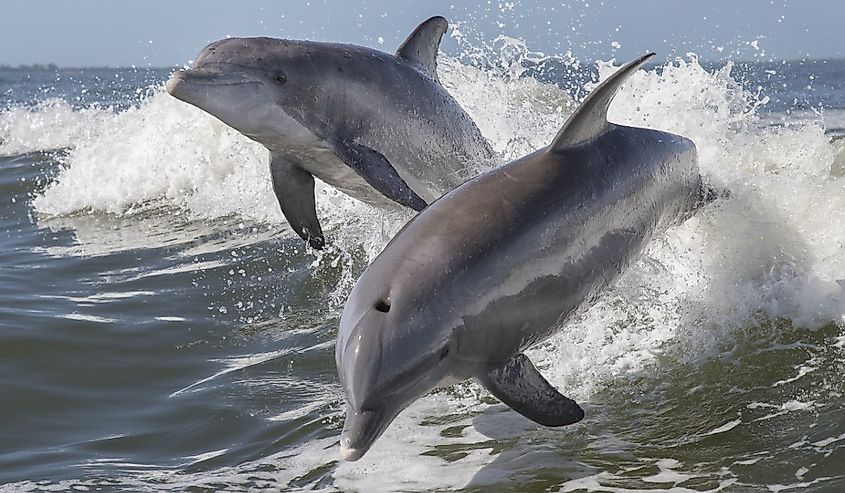
Atlantic bottlenose dolphins have a similar reputation as manatees, and they are one of the most sought-after wild animals to view in Florida, especially by tourists. They are the most common dolphin to spot in the state’s coastal waters, and since they are social creatures, you are likely to see them in groups of 10 or more. Generally, these aquatic mammals are gray, with a lighter (nearly white) underbelly. Their name comes from their short, bottle-shaped snout, and they can grow to be 12 feet long, weighing over 1,200 pounds. Dolphins that live closer to shore, however, are often smaller and lighter in color.
Although they cannot physically move their facial muscles in the same ways humans do, we have all seen photos or videos of a dolphin's smile. While the "smile" in question is simply a result of their anatomy, it is unsurprising that humans project this human attribute onto them, given the animal’s spirited demeanor. They are graceful swimmers, reaching speeds of over 18 miles an hour, and are known for curiously swimming and jumping alongside boats. Their playful above-water leaps, while offering a way to breathe (since dolphins do not have gills) are also sometimes simply performed for fun. So, while you may not get the chance to see a dolphin smile, if you ever see a bottlenose in person, you will witness its contagious joy in other ways.
Moon Jellyfish (Aurelia aurita)
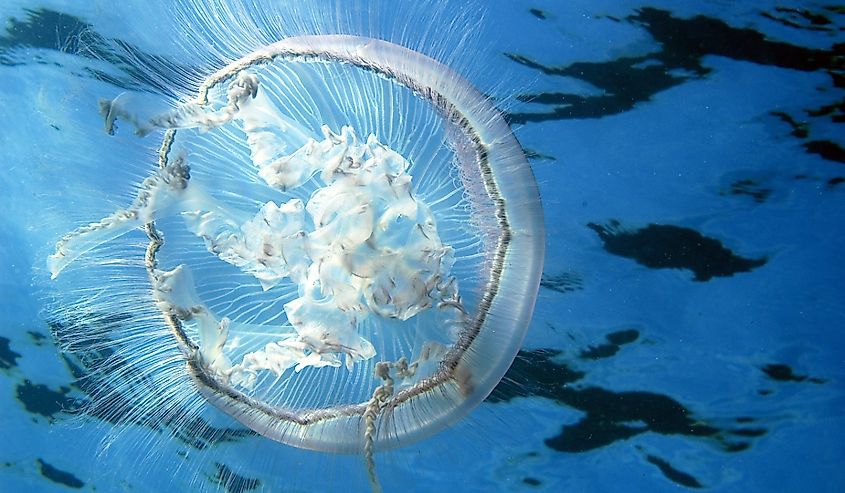
A stunning Florida sea creature you may not want to appreciate quite as closely is the moon jellyfish. Amazingly, this 12-inch-wide saucer-shaped creature has no brain, eyes, or heart, and 95% of its body is comprised of water. The four arch shapes in the center of the dome are its reproductive organs, which are visible through the jellyfish’s mostly translucent body. But the reason you may not want to get too close are in its tentacles. Unlike other jellyfish, the moon jelly has hundreds (sometimes as much as 1200) of very short tentacles. Their cells (nematocysts) are used to sting and stun prey (like zooplankton), along with the occasional human. Luckily, the stings are considered mild as far as jellyfish stings go, and many people only have a minor reaction, while others have no reaction at all.
It is, however, still advisable to admire these quirky creatures from a distance. In Florida, you are most likely to see them offshore in a coral reef or washed to shore on a beach in the Florida Keys since they are not very strong swimmers. The species, however, serves as a unique indicator for the health of local marine ecosystems. This adaptable creature can flourish in waters deemed unlivable by other animals, so if the ocean’s health declines, moonfish jelly populations often thrive.
Loggerhead Sea Turtle (Caretta caretta)
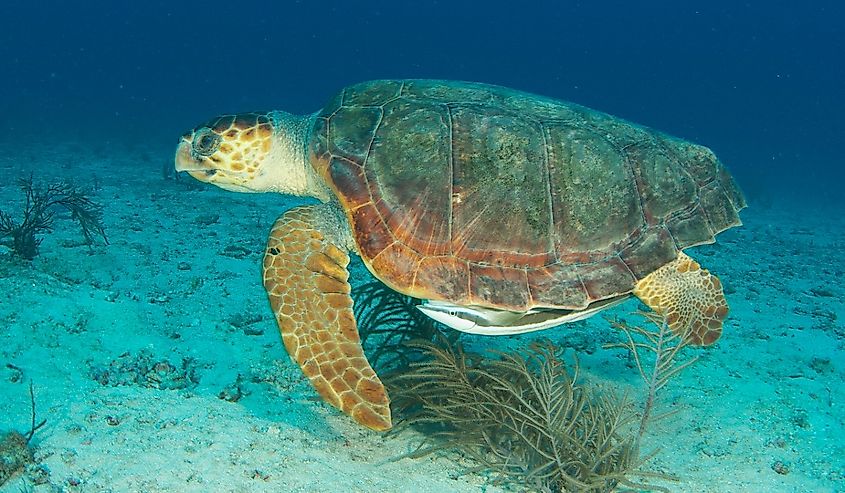
The beaches along Florida’s Gulf of Mexico and Atlantic coast are home to some of the most significant nesting areas for loggerhead sea turtles in the world. Lucky Floridians can relish (from afar) in watching newly freed hatchlings journey to the ocean to begin their lives. These adorable babies hatch at just 2 inches in length, but grow tremendously as they mature, ranging from 2.4 to 3.5 feet in size, and weighing an average of 275 pounds (while some reach 412 pounds). As the name implies, the loggerhead has a large block-shaped head, and their powerful jaws enable them to break through the shells of their prey, such as horseshoe crabs. The loggerhead’s intricate upper shell sports a deep reddish-brown, while the undershell is more of a soft yellow.
Despite being the most commonly sighted sea turtle in Florida, the loggerhead is still considered a threatened species, primarily due to fishing nets catching them unintentionally. But Florida recognizes the importance of these breathtaking creatures, which is why they designated loggerheads the official state saltwater reptile. They are also protected by the Federal Endangered Species Act and Florida's Marine Turtle Protection Act. Aside from being appreciated for their beauty, these marine reptiles are integral members of their ecosystems, spreading vital nutrients through food consumption to keep seafloor sediment balanced. But the loggerhead turtle also serves as a habitat in itself. Up to 100 species of marine flora and fauna living on the loggerhead’s shell have been discovered.
Florida Black Bear (Ursus americanus floridanus)
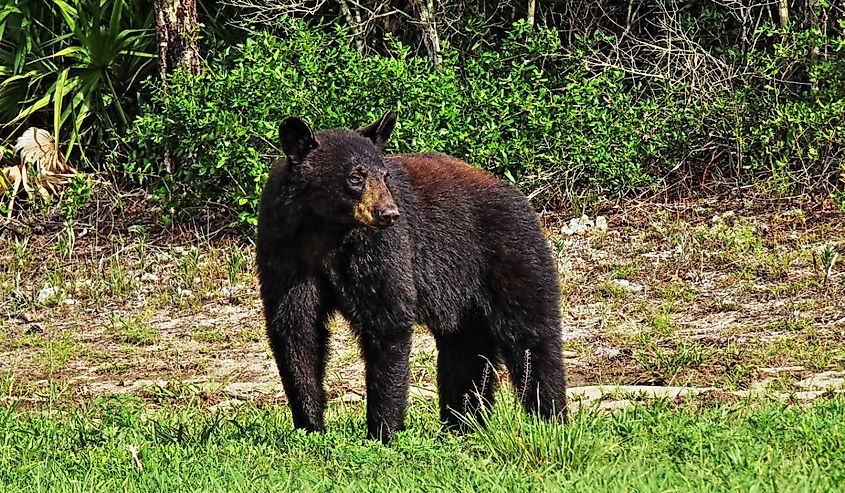
Back on land, the mighty Florida black bear is the only species of bear living in the Florida wild, making them a special presence in the state. There are an estimated 4,500 of them living here, and although they once thrived throughout the entire state, they now exist in around 49% of their original range due to urban sprawl. These massive creatures have an average weight of 250 to 450 pounds for males, while females are much smaller, ranging from 125 to 250 pounds. In 2015, the largest bear ever recorded in Florida's history weighed a whopping 740 pounds.
Aside from their stupendous size, they are known for their deep black fur and powerful hind legs, which carry them at speeds of up to 35 miles per hour. For reference, world record sprinter and Olympic gold medalist Usain Bolt reaches 27 miles per hour at his fastest. Yet despite the black bear’s tremendous speed, you may be surprised to learn that only 5% of their prey consists of animal matter. 22% of their diet consists of insects, while the remaining majority (73%) is plants. As a result, like the loggerhead, these animals are amazing at spreading nutrients and dispersing seeds through their food and waste, making them irreplaceable members of the Florida wilderness.
Bobcat (Lynx rufus floridanus)
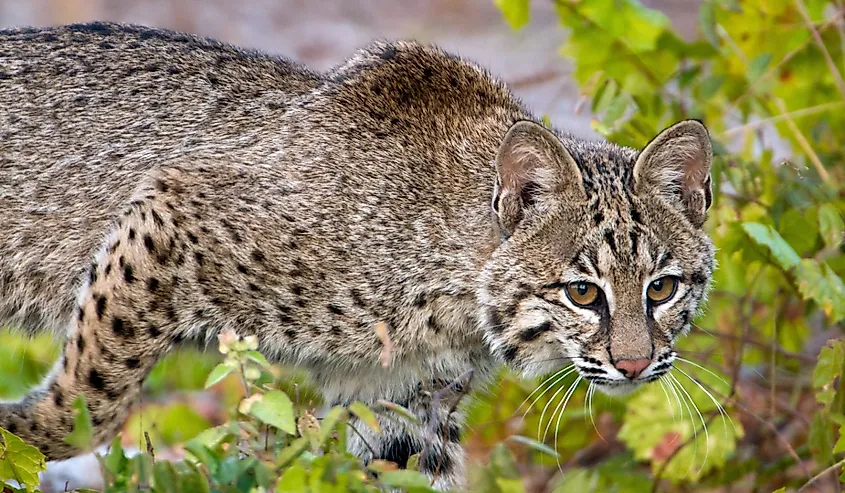
Throughout Florida’s forests and swamps — in all 67 counties — the handsome bobcat lives a life of mystery. They are the most common wildcat species in the United States, with around 300,00 in Florida alone, so you would assume their sightings would be fairly common. But these gorgeous creatures are incredibly elusive. For some Indigenous American tribes, their elusiveness is even the subject of legends. Other tribes celebrate the animal for its resilience, wisdom, and survival instincts — traits attributed to their secretive nature.
On average, the female bobcat weighs 30 pounds at most, while the male peaks at 35. For reference, this is about double the size of your typical domestic cat. In some ways, they bear a strong similarity to these household pets, like the shared triangular ears. But if you ever get lucky enough to see one of these seldom-spotted creatures out in the wild, it is easy to appreciate the differences. Their tan/ light brown fur is marked in brown lines and spots, with a lighter (usually white) underbelly. But the tail, is the bobcat’s most identifiable feature. The "bobbed" tail results from a genetic mutation that keeps it only 1 to 4 inches long. The bobcat — whose hunting primarily occurs on the ground — has not needed to adapt a long tail for balance, although they are more than capable of climbing trees when duty calls. So, if you are hoping to spot one of these stunning, sly creatures, you may just have to keep your eyes at ground level, with the occasional glance overhead.
Florida Panther (Felis concolor coryi)
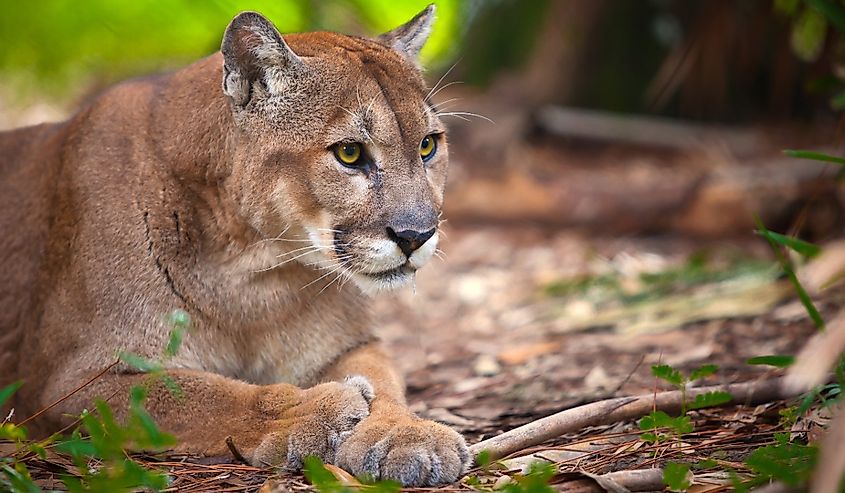
An even rarer sight in Florida is its own state animal, the Florida panther. Selected as the official state animal by a vote of students in 1982, this majestic wildcat mainly lives in southern Florida and can be found in the Everglades. Unfortunately, despite being protected against legal hunting since 1958 and being placed on the federal and state endangered species lists in 1967 and 1973, there are only 200 or so left in the Florida wilderness. However, preservation efforts are considered a high priority to protect this important creature. Along with being beloved for its beauty, the Florida panther is an umbrella species, meaning they are vital parts of their ecological communities since their protection indirectly protects other species as well.
If you spot a wildcat out in Florida and wonder which of the two you saw (bobcat or panther), it is easy to differentiate between the two. The first thing to know is that panthers are around 3 to 4 times larger than bobcats. The males weigh 130 pounds on average, while the females weigh 80 pounds, so the difference between species is easily recognized based on size alone. But the other main difference is the puma’s hypnotic tail, which is long and much more similar to that of a domestic cat’s based on scale. These massive wildcats (in some ways) are more similar to housepets than one may realize. The Florida panther, despite its size and fierce appearance, cannot roar but instead communicates with growls, snarls, and even purrs.
Burrowing Owl (Athene cunicularia)
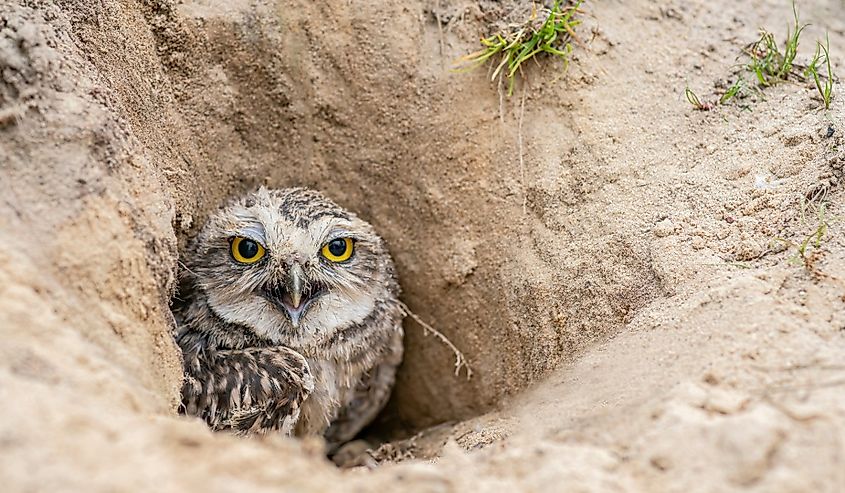
An animal far tinier by comparison, the burrowing owl is one of the smallest owls in the state and one of the cutest. It reaches a length of just 9 inches, making it smaller than the common pigeon, meaning this pint-sized bird is a crowd favorite when spotted. Size aside, its brown plumage and white speckles are sweet but equally helpful to the bird’s survival. While many commonly associate owls with flight or hiding out in trees, this petite beauty mainly lives on the ground in Florida’s prairies, and its neutral hues help camouflage it from predators. As their name implies, they nest in burrows dug with their beaks and feet.
From around February through July, burrowing owls participate in their breeding season with a unique twist. During these months, unlike other owls, they are diurnal (active during the day), making it much easier to catch a glimpse of them. Bear in mind they are classified as state-threatened due to habitat loss, so you will want to admire their charm from afar. This is especially important given how important they are to their ecosystems, and to humans. Agriculturalists and gardeners alike love burrowing owls for their pest-eating abilities, while city dwellers can thank them for taking care of disease-spreading rodents.
Final Thoughts
As the world continuously grows and changes, it is crucial that we step back, slow down, and remember to behold the natural wonders all around us. So many of these creatures, along with their dazzling presence and beauty, are integral parts of their ecosystems. Like a fallen domino, their disappearance would have tremendous impacts on the world around them.
Across time and space, humans have watched too many species disappear, their beauty and value forever lost. The Tasmanian tiger, extinct since 1936, is no longer alive to prevent overpopulation through their majestic hunting. The passenger pigeon, too, is forever gone and no longer able to create balance as an "ecosystem engineer," just as the American alligator does today. All forms of wildlife, no matter their size, shape, or color, contribute to an intricate web of life that humans have been blessed to appreciate. Conservation efforts help ensure that these beautiful creatures remain alive in the wild for us and future generations to witness rather than only on the pages of a textbook.










